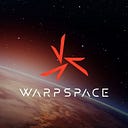IAC 2023] The Inseparable Relationship between Space Development and Geopolitics: What Did We See at the IAC?
The International Astronautical Congress (IAC), one of the world’s largest conference events organized by the International Astronautical Federation (IAF), was held again this year from October 2–6. The IAC has a long history, and this year was the 74th since its inception in 1950. More than 6,000 participants from all over the world attended the conference as a forum for the presentation of development plans and academic research results of space agencies of various countries. This year’s venue was Baku, the capital of Azerbaijan, which faces the Caspian Sea.
The IAC includes a main session in which presidents of space agencies of various countries take the stage, technical sessions in which peer-reviewed academic research is presented by topic, and booth sessions in which space agencies of various countries and space-related companies exhibit their products. From Warpspace, CSO Mori participated in the conference.
Mori has participated in the IAC many times before, but this time the atmosphere was very different from the past. Mori speculates that there are two major reasons for this. One is the conflict in Azerbaijan. The other is Azerbaijan’s relationship with China and Russia. In this article, we will report on the IAC in detail, taking the above two points into consideration.
(For last year’s report.)
The Conflict and IAC in Azerbaijan
The first reason is that Azerbaijan has been in conflict with its neighbor Armenia for nearly 30 years. Azerbaijan and Armenia became independent states after the dissolution of the former Soviet Union, and many Armenians live in the Nagorno-Karabakh region within Azerbaijan’s territory. The conflict over Nagorno-Karabakh has been tense, with Armenia supported by Russia and Azerbaijan by Turkey. (*1) As of September 20, 2023, Azerbaijan and Armenia reached a ceasefire agreement and the Nagorno-Karabakh region was disarmed, but the region was still at risk because of military activities in the region until last month. However, Mori said that the atmosphere at the conference was different from the previous ones, as the conference was held in an area that was still at risk because of the military activities that had been conducted in the country until Aug 2023.
In addition to that, as mentioned earlier, Azerbaijan is a former Soviet land, so there were many Russian participants, which is another big difference from last year’s IAC, which had almost no Russian participants.
What China’s Capabilities in the Field of Space Development Become Visible Because of the Azerbaijan Event
Another factor that contributed to the bizarre atmosphere, Mori considers, was the relationship between Azerbaijan and China. Although China maintains a neutral position on the aforementioned Nagorno-Karabakh issue, Azerbaijan, which is located on the border between Europe and West Asia and was a geopolitically important land on the ancient Silk Road, is an extremely important region in China’s One Belt One Road policy, which aims to recreate the Silk Road. For this reason, Azerbaijan is an important partner of China in the Eurasian region and is said to be one of the earliest countries to respond to and actively participate in the One Belt, One Road project. Perhaps because of this relationship with China, there were very few people from the U.S. side at the IAC this time, according to Mori. On the other hand, while ESA and Germany’s space agency did not participate, France, Italy, and other countries with ties to China and Russia did, and the political background of the event could be clearly seen. Especially in the field of space development, the cooperation of French scientists in the Chinese-led exploration program to Jupiter’s moon Ganymede (*2) confirms the closeness between France and China, and we need to keep a close eye on future developments.
(*2 [Reference: EGU] Gan De: Science Objectives and Mission Scenarios For China’s Mission to the Jupiter System)
The presence of Chinese companies at the booths was also significant, with the China Aerospace Science & Industry Corporation Limited (CASIC), a Chinese satellite manufacturer, and others exhibiting in huge booths similar to those of Lockheed Martin and others at IAC in the past.
There, CASIC’s Very Low Earth Orbit (VLEO) constellation was introduced, announcing that it plans to launch 192 satellites by 2027, providing users with space information services such as weather every 30 minutes, and expanding to 300 satellites by 2030 (*3). ).
Reference SPACE NEWS: China’s CASIC to begin launching VLEO satellites in December)
Elon Musk’s appearance on the stage attracted a great deal of attention. What is the background?
In a conversation with IAF President Clay Morley, Mr. Musk explained the development of SpaceX’s giant reusable rocket, the Starship, and how it is being utilized.
‘SpaceX’s immediate goal is to resume flight testing of the Starship, which took place earlier this year and failed, with attempts to re-enter the rocket, land, and reuse the upper stage continuing through the end of next year. The goal is to bring Starship’s first and second stages to the point where they require little or no modification, allowing for four to five launches per day.”
The fact that Musk’s appearance on stage was rare, coupled with the fact that few U.S.-based companies and officials were in attendance, drew a great deal of attention. Mr. Mask’s discussion was streamed on X (formerly Twitter), and it seems that the number of viewers in real-time reached 3 million. While very few U.S. companies participated, the IAC’s two premium sponsors were SpaceX and the Chinese Society of Astronautics (CSA).
It appears that the balance is being maintained by Mr. Musk’s presence on the stage.”
Mori said. Because of the huge amount of money involved and its direct link to security, the space market is inseparable not only from pure science and business but also from political factors. This topic strongly reminded us of the characteristics of the space market.
